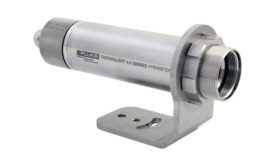Home » instrumentation
Articles Tagged with ''instrumentation''
Hygiene
Advanced instrumentation technologies provide versatility in food and beverage applications
As more advanced instruments are available with hygienic configurations, processors find new ways to use these capabilities to improve plant performance
August 19, 2019
Engineering R&D
Spectroscopy monitors chemistry, surface-level foreign objects in real time
April 16, 2019
Automation Series
How to get the most out of sensors
Processors can get more out of sensing technology than ever, but only if they do their due diligence.
August 1, 2018
Elevate your expertise in food engineering with unparalleled insights and connections.
Get the latest industry updates tailored your way.
JOIN TODAY!Copyright ©2025. All Rights Reserved BNP Media.
Design, CMS, Hosting & Web Development :: ePublishing














